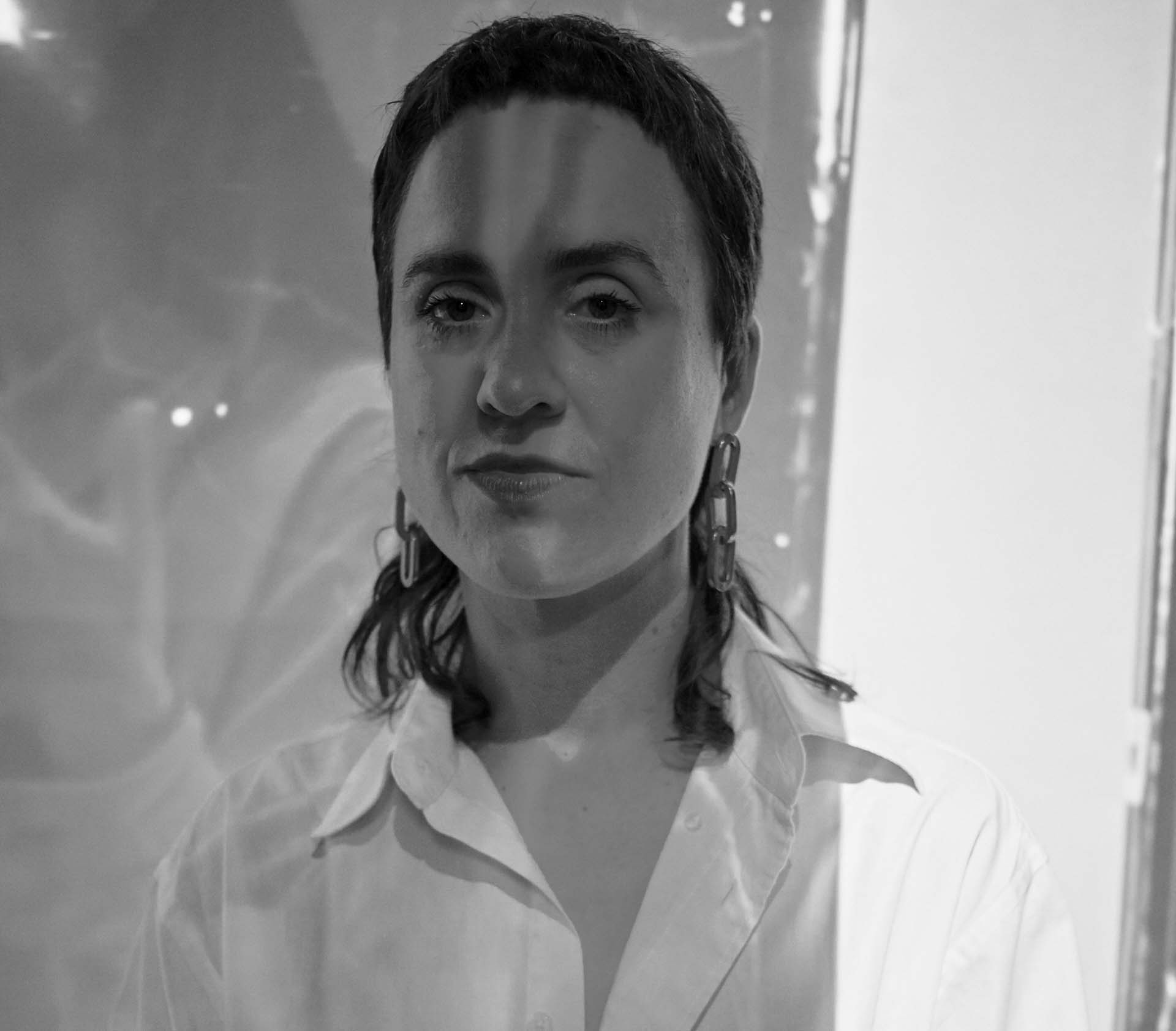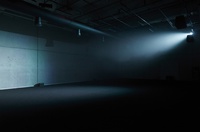Frances Barrett
Kaurna Country, Tarntanya/Adelaide
2023
Displayed 2023 at Carriageworks

Frances Barrett
Born 1983, Guringai and Darug Country, Sydney
Lives and works Kaurna Country, Tarntanya/Adelaide
Frances Barrett is an artist whose recent projects centre on vocal performance, taking the form of immersive sound installation (Meatus, 2022), live performance (Curator’s Talk, 2022) and video installation (A Song for Katthy, 2022). Her work often foregrounds collaborative processes, where she works closely with performers, technicians and curators to realise projects. Since 2007, she has collaborated with Diana Baker Smith, Kate Blackmore and Kelly Doley under the collective name of Barbara Cleveland. She was the Chair of the Curatorial Advisory Board for the live event VERS: On Pleasures, Embodiment, Kinships, Fugitivity and Re/Organising (2022) that privileged queer ways of doing and being and centred creative practice and conversation.
Photograph: Charles Dennington
Artist text
by Joel Stern
Voices are slippery objects, originating somewhere, yet apprehended elsewhere. Permanently situated at a spatial and temporal remove from source, they enter the world as they exit the body, at once embodied and disembodied, alive and dead. In this liminal zone, voices echo themselves, becoming mnemonic devices, summoning memories, hallucinations, and traumas.
Since 2007, Frances Barrett has worked with the multiplicity of the voice: as part of the collective Barbara Cleveland, through delegated performances, and in immersive sound installations. Less a composer than a sonic dramaturg, her work is steeped in theatre, collaborating with performers to develop experimental methodologies as opposed to concrete outcomes.
This is especially evident in collaborations with vocalist Joanna Fabro. A Song for Katthy (2022) is for Katthy Cavaliere, a performance artist who passed away in 2012. To initiate this project, Barrett researched Cavaliere’s archives held by the Art Gallery of New South Wales. In her extensive diaries, Cavaliere would describe ‘the hole’: a psychic and emotive space where she felt held in communion with her late mother. (1) These words produced a powerful sonic image for Barrett, who had been exploring ‘orifice-oriented’ thematisations of holes in, out, and through the body.
Barrett conceptually conjoined ‘hole’ with ‘mouth’, elucidating a kind of haunted cavity from which voices might emerge, spiralling out into the world. Mouth and voice are entangled entities, as Brandon LaBelle notes: ‘The mouth is wrapped up in the voice, and the voice in the mouth, so much so that to theorize the performativity of the spoken is to confront the tongue, the teeth, the lips, and the throat.' (2) Yet if mouths are irreducibly material, voices are, conversely, relational. Barrett was struck by a passage from Adriana Cavarero that seemed in dialogue with Cavaliere’s experience, marked by the loss of her mother: ‘The voice is always for the ear, it is always relational; but it is never as relational as it is in the first cry of the infant.' (3)
In A Song for Katthy, Fabro embodies both mother and child, channelling a double-voiced subjectivity that cries, gags, bleats, whimpers, exhorts, and ultimately screams, in desperation and longing; voices are never fully heard, and will always recede into silence. This is neither good nor bad, but a condition of materiality and relationality. Roland Barthes writes, ‘Isn’t the entire space of the voice an infinite one?’ – by which he means inexhaustible and not reducible to easy truths. The voice is infinite because it holds ‘voices within the voice’, standing for multiple subjectivities. (4)
Barrett’s new collaboration with Fabro for Cry (2023), is a formalisation of methods explored in A Song for Katthy, this time situating the performative qualities of the voice across distributed speakers, configured as an immersive sonic environment. Each speaker loops a discrete vocal performance by Fabro of the same score, creating a sense of shifting synchronicities, temporalities, and emotions emerging from common material. The audience navigates, recomposing the work through their own movements and listening, becoming immersed in the unstable space of voices.
(1) ‘Perhaps while I was in the hole today, I was being held there by them all’ – Katthy Cavaliere, Art Gallery of New South Wales, MS2016.14, Box Six, Diaries 2005–2011.
(2) Brandon LaBelle, Lexicon of the Mouth : Poetics and Politics of Voice and the Oral Imaginary, Bloomsbury Academic, New York, 2014, p.1.
(3) Adriana Cavarero, For More Than One Voice: Toward a Philosophy of Vocal Expression, Stanford University Press, Stanford, 2005, p.169.
(4) Roland Barthes, Image, Music, Text, trans. Stephen Heath, Fontana Press, London, 1977, p.184.
Artist's acknowledgements
Cry (2023)
Vocal Improviser and Co-composer: Joanna Fabro
Sound design: Felix Abrahams
This project has been supported by the South Australian Government through Arts South Australia; and the University of South Australia; and dplr.
